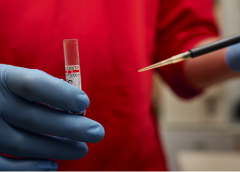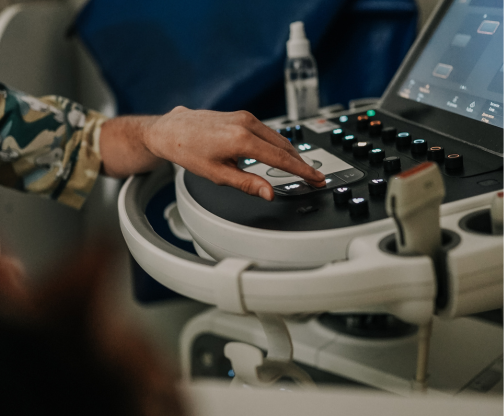How to interpret blood and urine tests?
Опубліковано
11.10.2024
How to interpret blood and urine tests?
How to interpret your pet's blood and urine tests: analysis of the main indicators and their importance for animal health
Blood and urine tests are the main diagnostic tools that allow veterinarians to assess the general health of an animal, diagnose diseases, and monitor the dynamics of treatment. For many pet owners, the results of such tests may seem complicated and incomprehensible. However, understanding the main indicators will help you better understand what the veterinarian is looking for during the examination.
Complete blood count (CBC)
A complete blood count (CBC) is one of the most common tests that provides information about the state of the hematopoietic system and the general health of the animal. Here are the main indicators to pay attention to:
- Red blood cells (RBCs): Red blood cells that carry oxygen throughout the body. A low red blood cell count may indicate anemia, while an elevated count is sometimes a sign of dehydration.
- Hemoglobin (HGB): A protein that carries oxygen. A low hemoglobin level also indicates anemia, which can be caused by chronic illness, blood loss, or iron deficiency.
- Hematocrit (HCT): The ratio of red blood cell volume to total blood volume. A low level confirms anemia, and a high level confirms dehydration.
- White blood cells (WBC): White blood cells that are responsible for the immune response. An elevated white blood cell count can indicate inflammation or infection, while a lowered count can be a sign of immune system problems or serious illness.
- Platelets (PLT): Cells involved in blood clotting. A low platelet count can lead to an increased risk of bleeding, while an elevated platelet count can sometimes indicate inflammation or infection.
Biochemical blood test
A biochemical blood test provides information about the functioning of internal organs, such as the liver, kidneys, pancreas, and electrolyte levels. Let's take a look at the key indicators:
- Alanine aminotransferase (ALT): An enzyme that indicates the functional status of the liver. Increased levels may be associated with liver damage or inflammation.
- Creatinine and urea (BUN): These indicators help evaluate kidney function. Elevated levels indicate possible kidney failure or impaired blood filtration.
- Glucose: The main indicator of blood sugar levels. An elevated level may indicate diabetes, while a decreased level may indicate hypoglycemia.
- Albumin: A protein that is produced in the liver. Low levels can indicate liver or kidney problems, while high levels are sometimes associated with dehydration.
- Bilirubin: An indicator that reflects liver function and biliary tract health. Elevated bilirubin levels may indicate liver or gallbladder problems.
- Amylase and lipase: Enzymes associated with pancreatic function. Their elevation may be a sign of pancreatitis.
Urine analysis
Urinalysis is another important diagnostic tool that allows you to assess the condition of the kidneys, urinary system and overall metabolic health of the animal. Main indicators:
- Urine density: Determines the ability of the kidneys to concentrate urine. A low density may indicate kidney failure, and a high density may indicate dehydration or elevated protein levels in the urine.
- Urine pH: Reflects the acid-base balance. A low pH may indicate diseases associated with metabolic disorders or infections, while an elevated pH may indicate the presence of a bacterial infection.
- The presence of protein: Elevated levels of protein in the urine usually indicate impaired kidney function or infectious processes.
- Glucose in the urine: Its presence is often a sign of diabetes, especially if your blood glucose level is also elevated.
- Red or white blood cells in the urine: The presence of these cells may indicate an infection or inflammation in the urinary system, trauma, or kidney or bladder stones.
What to do with test results?
Interpretation of blood and urine test results should be performed by a veterinarian, as each indicator should take into account the context of the animal's general condition, clinical symptoms, and possible comorbidities. However, understanding the basic indicators will allow animal owners to better perceive diagnostic information and take a more active role in planning treatment or disease prevention.
Conclusion.
Blood and urine tests are an important element of diagnostics that help identify hidden health problems in your pet. Understanding basic indicators, such as red blood cell, white blood cell, protein, or glucose levels, gives you an idea of the state of internal organs, metabolism, and the functioning of important body systems. However, the final conclusions should always be made by a veterinarian, taking into account the complex picture of your animal's health.
Схожі статті

Preparation for ultrasound examination (ultrasound)
It is important to remember that proper preparation of the animal can significantly facilitate the abdominal ultrasound process. By performing this procedure, the doctor can detect possible problems in time and provide proper treatment. High-tech ultrasound is one of the ways to quickly and informatively diagnose and ensure a long and healthy life for our pets.

Brachycephalic syndrome in dogs and cats.
What exactly is brachycephalic syndrome and how to live with it, how to prevent complications for the body that this syndrome can lead to?

WHY ARE DOCTORS NOT ALL-POWERFUL?
A good doctor is worth its weight in gold. Everyone understands this and can spend years looking for the best one, and when they find one, they will expect miracles.

Allergy
Allergy

SYNDROME OF TIRED TANKLES IN CATS
Tired antennae of a cat or What do you know about fatigue?

Bacterial myocarditis
This disease is extremely rare in dogs. In cats, it is even less common - 0.006-0.018% of cases.

How to protect home lovers from radiation damage.
In recent days, we have received many calls asking for advice on the need to protect animals during a possible radiation exposure.

STERILIZATION AND CASTRATION OF CATS AND DOGS
Such operations do not affect the change of the animal's character. They can be done from an early age, in particular from 8 weeks. Convenience, first of all for the animal, is that the young organism has the ability

Side effects of antiparasitic drugs
The need for tick and flea treatments for pets is a well-known fact.

How you can help calm cats and reduce stress today
the head of the felinology department, tells us.

